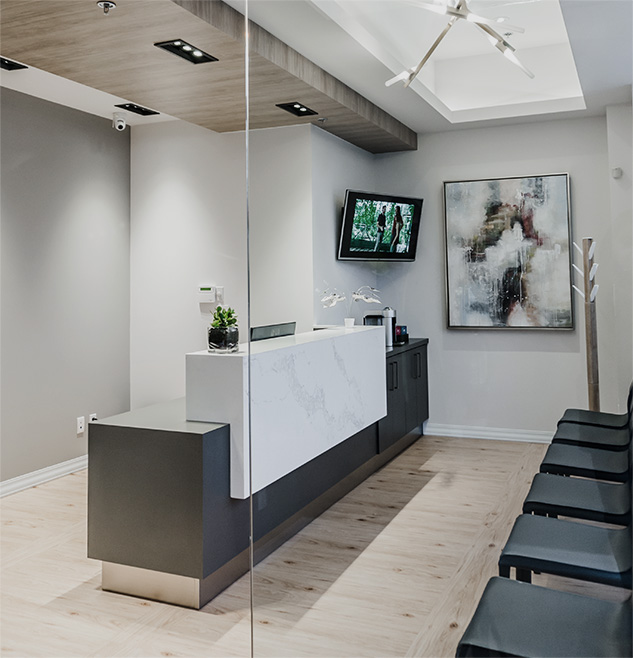Choosing the right orthodontic treatment is a big decision. Whether you’re a teenager looking to fix misaligned teeth or an adult hoping to enhance your smile, you’ve probably heard of both braces and Invisalign. There isn’t a one-size-fits-all answer to which one is better for you. Invisalign and braces each have their strengths and weaknesses, making them ideal for different people.
Let’s explore how braces and Invisalign work. For personalized advice, it’s best to visit your dentist. They can offer suggestions based on your unique oral needs and lifestyle.
Braces & Invisalign
Both braces and Invisalign are effective methods for straightening teeth and correcting bite issues. Braces have been around for decades, and use metal wires and brackets to gradually align your teeth. On the other hand, Invisalign is a newer innovation that uses clear, removable aligners to achieve the same results with a subtler appearance.
While both options ultimately achieve the same results, their treatment methods and day-to-day experiences differ significantly.
How Do Braces Work?
Braces use a combination of metal brackets, wires, and elastic bands to apply consistent pressure to your teeth over time. Here’s how they work:
- Attachment: Metal or ceramic brackets are bonded to the front of each tooth using dental adhesive.
- Connection: A metal wire is threaded through the brackets, and this wire is periodically tightened to guide your teeth into place.
- Adjustments: Regular visits to the orthodontist to adjust the wires to continue applying the right amount of pressure.
Braces are fixed to your teeth, meaning you wear them 24/7, and the treatment can last anywhere from 1 to 3 years, depending on your specific case.
How Does Invisalign Work?
With Invisalign, you wear custom-made aligners that are nearly invisible. These aligners gently shift your teeth into their correct position over time. Here’s how the process looks:
- Digital scan: Your orthodontist takes a 3D scan of your teeth to plan your exact tooth movements.
- Custom aligners: Using this scan, a series of clear aligners is created. Each set of aligners are worn for 1–2 weeks before progressing to the next adjustment.
- Daily wear: Aligners are worn for 20–22 hours per day, only being removed for eating, drinking, and brushing.
Effectiveness of Braces & Invisalign
Both braces and Invisalign are highly effective in treating common orthodontic issues, such as overcrowding, spacing, and bite problems. Here’s how the 2 compare:
- Braces: Braces are often more effective for addressing complex dental and jaw issues, such as severe crowding or a very misaligned bite.
- Invisalign: Invisalign is ideal for mild to moderate cases and is generally recommended for people who consistently wear their aligners for the advised 20–22 hours daily.

Treatment Time
For people concerned about speeding up their treatment time, Invisalign may have an edge, provided you wear the aligners diligently.
- Braces: Typically require 1–3 years of active treatment, depending on complexity.
- Invisalign: Treatment can be as short as 6 months, but this time frame varies depending on how consistently you wear the aligners. Your dentist can give you a more accurate timeframe.
Comfort & Convenience
There are a few differences in comfort and convenience between braces and Invisalign.
Braces:
- Can cause discomfort during adjustments or when brackets rub against the inside of your mouth
- Fixed to your teeth, meaning no hassle of removing or losing them
Invisalign:
- Made from smooth, BPA-free plastic, meaning no sharp edges or wires
- Removable for eating, drinking, and special occasions, offering convenience
Cost Comparison
Costs will vary based on the severity of your case and your location. Typically, Invisalign ends up being slightly more expensive. But you must weigh the potential benefits of Invisalign against those of braces when deciding on value.
One thing to keep in mind when considering cost is that many orthodontists offer payment plans to make either option more affordable.
Who Is a Good Candidate for Braces?
An orthodontist may recommend braces for younger patients who may struggle with consistently wearing clear aligners.
Braces may also be ideal for:
- People with complex dental or jaw alignment issues
- People who aren’t worried about the aesthetic impact of fixed metal brackets
Who Is a Good Candidate for Invisalign?
Invisalign is an excellent option for adults who want to maintain a professional-looking smile while undergoing treatment.
You may also be suited for Invisalign if you:
- Have mild to moderate alignment issues
- Want a more discreet orthodontic treatment option
- Are disciplined about wearing the aligners as instructed
Which Option Is Right for You?
Invisalign and braces each have pros and cons to consider. The right option for you depends on your lifestyle and orthodontic needs.
Pros of braces:
- Effective for all levels of complexity
- There’s no temptation to remove or forget them since they are fixed
- Slightly more affordable
Cons of braces:
- More clearly visible
- Require avoiding certain sticky or hard foods
Pros of Invisalign:
- Nearly invisible for a discreet appearance
- Removable for eating, drinking, and special occasions
- Less discomfort
Cons of Invisalign:
- May not be suitable for highly complex cases
- Requires discipline to wear 20–22 hours daily
Find the Best Match for Your Smile
Choosing between braces and Invisalign comes down to your personal preferences, lifestyle, and the complexity of your case. Both solutions are incredibly effective when tailored to your needs and guided by an experienced professional. If you’re still unsure which path to take, book an appointment with our friendly team at Markham Dental Smiles. We can assess your smile and help you make the right choice—from creating a personalized treatment plan to being there for every step of your smile transformation.







